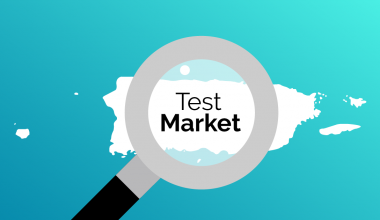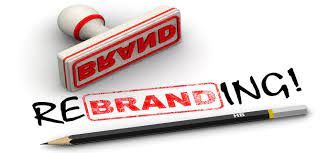Did you know that 95% of product launches are a failure?
That’s not a good statistic if you own your own firm. It is, nonetheless, a vital aspect to remember if you want to produce successful products and services. If you want to succeed with your target audience, every aspect of your product and its rollout must be flawless.
Concept testing comes into play here. You can use it to test price points, product features, and even adverts that you want to issue. You’ll avoid costly blunders and become one of the fortunate 5% of businesses to launch a successful product. So in this post, we’ll define concept testing and explain the various methods you may use to test concepts for your market. Then, we’ll end off by discussing concept testing marketing surveys and listing some real-world examples of companies that have profited from concept testing.
What is Concept Testing?
Concept testing is a research method that entails asking clients questions about your product or service thoughts and ideas before actually launching it in the market. As a result, you can assess your market acceptability and willingness to buy, allowing you to make key decisions before the launch.
The Advantages of Concept Testing
I always presume that any new feature or product idea I develop will be a success. However, this is rarely the case. Customers are the only ones who can tell whether an idea will succeed or fail. That is why it is critical to put your concept and thoughts to the test before launching them to your clients. The insights gained through concept testing will assist you in launching effective and successful products in the market.
Concept testing can also provide you with in-depth insights into several areas of your idea in the market. You can inquire about a certain feature, appearance & feel, pricing, and other topics. As a result, you can ensure the accuracy of every element before releasing the product.
Organizations and enterprises use surveys to do concept testing, making it a straightforward method for companies of all sizes to implement. We’ll discuss many methods of concept testing in the next section.
Concept Testing Methods
Many different methods of concept testing have been developed and used by researchers over the years. These methods are classified according to how the concepts are presented. Each of these strategies is appropriate for a specific type of research. The use of a research platform makes concept testing simple. So, the four basic methods of concept testing are as follows:
- Comparison testing
- Monadic testing
- Sequential monadic testing
- Proto-monadic testing
#1. Comparison testing
Respondents receive two or more concepts during comparison testing. Respondents compare these concepts by rating or ranking questions or simply selecting the best concept provided.
Comparison tests produce clear and understandable results. It is simple to decide which concept is the best. However, the results are devoid of context. There is no way of knowing why respondents choose one concept over another. Before successfully releasing a product, it is critical to understand these details.
#2. Monadic testing
In this concept testing method, the target audience is divided into many groups in a monadic test. Each group receives only one notion. These exams concentrate on thoroughly analyzing a specific idea. A monadic test survey is often brief and narrowly focused.
Because each group of responders sees a distinct notion, it is feasible to go into great detail without making the survey too long. Researchers can ask follow-up questions regarding a concept’s many features, such as what they loved about it, its look and feel, price range, and so on. Though each group of responders sees distinct concepts in isolation, the follow-up questions for each concept will be the same.
Monadic test surveys are brief and allow researchers to ask several follow-up questions. As a result, the results provide a greater explanation for why one concept is superior to another. However, because the target audience is divided into several categories, the sample size required to run a monadic test is large. Because several concepts must be tested, the sample size is more important. The expense of research rises dramatically as the sample size grows.
#3. Sequential monadic testing
Sequential monadic tests, like monadic tests, divide the intended audience into different groups. Instead of presenting one notion at a time, each group receives all of them. So, to avoid bias, you’ll randomize the order of the concepts. Also, to gain additional insights, you’ll ask the respondents an identical set of follow-up questions for each of the themes.
Because each group of responders sees all concepts, the target audience size required to run a sequential monadic test is modest. In a single round, multiple concepts can be examined. As a result, sequential monadic tests are less expensive and easier to implement. This concept testing strategy is appropriate for research with a limited budget or when only a small target audience is available.
However, because each set of responders is presented with all of the concepts, the questionnaire is very lengthy. This has an impact on the completion rate and may induce nonresponse bias. Limiting the number of questions allows researchers to shorten the questionnaire’s length. This, however, has an impact on the profundity of the gathered insights.
Other biases, such as interaction bias and order bias, can affect sequential monadic testing.
#4. Proto-monadic testing
A sequential monadic test is followed by a comparison test in a proto monadic test. Respondents are asked to examine numerous concepts before selecting the one they like.
This design is beneficial for validating the sequential monadic test results. Researchers can also determine whether the idea chosen in the comparison test is consistent with the information gathered about each concept.
Once you’ve decided on a method, you’ll need to create a survey to conduct your test. Creating a survey and then utilizing a block randomizer successfully yields the best results. The section that follows will go over the criteria and best practices for designing an effective concept testing survey.
Read Also: Sales Coaching: Detailed Guide to Sales Coaching for your Sales Team
Survey Design for Concept Testing
An online poll is used for concept testing. The survey should be structured to assess how respondents feel about your notions or ideas. The information gathered through these surveys is then used to determine whether clients prefer or reject your concept. Here are some pointers to help you create a useful concept testing survey.
#1. Set a goal for your survey.
Once you’ve established a broad goal for your survey, it’ll be much easier to devise questions that will elicit useful information on your notion. It is vital to consider the actual purpose of the test as well as the specific details that you wish to discover from your clients. So, as a result, you can create a survey with appropriate questions and obtain useful information about your clients’ perspectives.
#2. Consistent Survey Design
Using survey blocks to group-related questions is always a good idea. Survey blocks aid in the creation of a well-organized flow for your surveys and makes it easier for respondents to respond to them. Respondents can simply focus on one aspect of their ideas and provide accurate and meaningful feedback if there are no interruptions.
#3. Likert Scales
Likert scales are rating scales containing an odd-numbered series of answer options, typically ranging from five to seven. So, in your survey, you can include Likert scale questions that ask respondents to score their viewpoint on a five- or seven-point scale ranging from “strongly agree” to “strongly disagree.” Using Likert scale questions ensures that your survey has a consistent design, making it easier for respondents to respond. Furthermore, employing Likert scales makes data analysis easier.
#4. Include Visuals
“A thousand words are worth a thousand pictures.” When you want responders to provide comments on a visual notion, this idiom applies. Logo testing is a fantastic illustration of when visuals should be used instead of text. You can show different logo design concepts to your responders and ask them to choose the one they like most. This eliminates bias and produces results that are easy to understand.
#5. Questions About Demographics
Demographic questions must be included in your survey to ensure that the respondents are from your target population. Your concept may receive negative comments. However, it is possible that this is not a reflection of the concept itself. Rather, the reply may not be a customer of yours and is uninterested in your goods. It is critical to include demographic survey questions in order to ensure that your concept will be effective with your targeted clientele.
Now that you understand how to create a useful concept testing survey, let’s look at some use situations where concept testing might be useful.
Read Also: TEST MARKETING: Best Practices to Scale any Business (+ Helpful Reviews)
Concept Testing Use Scenarios
Here are some examples of the most prevalent scenarios in which concept testing can be used:
#1. Product creation
Companies frequently utilize concept testing to make judgments when designing new goods. You can learn which features are important to clients and which should be avoided. You can also learn about the problems users have with existing functionality.
Also, you may evaluate client expectations, make improvements, and effectively launch your product by using a usability testing survey and idea testing.
#2. Design of the new homepage
Redesigning your website’s homepage might be difficult. The homepage is the first point of contact for most SaaS and eCommerce enterprises with potential clients. That is why, when rebuilding your website, you must ensure that everything is correct.
You can use concept testing to expose your designs to clients who will engage with them and give you a good notion of how they feel. Using these results, you may iron out design issues and be ready for a flawless launch.
#3. A new logo is being tested.
Your logo is an essential component of your company’s brand. It is frequently the first thing that customers notice about your company. As a result, while creating a new logo, it is critical to consider how customers will react to the new design and how your brand will be visually communicated.
Concept testing is a terrific technique to test numerous concepts and create a brand that your clients will recognize.
#4. Pricing and Offers
When you plan to give discounts for a new product or create a whole new pricing structure, concept testing comes in handy. It is critical to test your clients’ initial reactions and determine the features and benefits that would pique their interest.
To see if your customers are interested, do a concept test on your upgrade pages or discount offers.
You can do pricing research using the monadic test design.
#5. Advertisement testing
On websites, it is normal practice to test advertising, banners, and graphics to find the best potential combination. Concept testing can reveal which ad is attracting the most attention or resulting in the most conversions.
Because the feedback is provided directly by consumers, you can be confident in its veracity and tailor your advertising and marketing approach appropriately.
After we’ve gone over the various concept testing use cases, we’ll move on to the next part to learn about some examples of real companies that employed concept testing to their benefit.
Examples of Concept Testing
Here are some good examples of concept testing marketing:
#1. Tesla Inc.
Tesla’s Model 3 debuted in 2017 and made headlines throughout the world. This is a very good example of concept testing. Tesla used a novel launch approach, concept testing, to secure customer approval and raise funding.
The Model 3 concept was presented to the participants. They had the option to put down a deposit once they were familiar with the car’s various features and perks. Tesla was able to raise $400 million as a result of this method.
Thus, by conducting concept testing, Tesla was able to obtain valuable feedback from customers as well as the financial means to proceed with their launch.
#2. Lego
Lego has always had difficulty selling its items to females. Despite their best efforts, young girls only purchased 9% of their toys. Lego chose to change this by investing extensively in concept testing and market research over a long period of time. The major goal of this study was to better understand the play behaviors of young females.
This research revealed that girls tended to construct full settings rather than single structures. Girls were also more concerned with interior layouts and structural aspects.
Using these observations, Lego decided to create a completely new line of items aimed just toward females – Lego Friends. This series debuted in 2012 and increased the value of building toys for girls from $300 million in 2012 to $900 million in 2014.
#3. Yamaha
Yamaha is one of the world’s largest manufacturers of musical instruments. When constructing their Yamaha Montage keyboard, the business struggled with whether to utilize knobs or sliding faders. As a result, they decided to conduct a concept testing poll with their clients to determine their preferences. They were ready to make their pick after receiving over 400 submissions from musicians all across the world. What may have taken some weeks of the internal debate was decided in a single day.
#4. NASCAR
In 2017, NASCAR decided to alter the structure of its most important event. They wanted to get input from viewers on how they felt after the adjustment. This effort was critical since the cash generated by NASCAR through advertising was directly influenced by viewership.
NASCAR conducted concept testing and research with over 200 super fans to assess their experience, opinions, and reactions to the events and advertising. This research assisted NASCAR in invalidating its new format. They also gathered critical information that allowed them to properly implement the new race format.
Can Concept Testing be done in-house, or is it best to outsource to a professional firm?
The choice between in-house Concept Testing and outsourcing to a professional firm ultimately depends on the resources and expertise available within a company. If a company has a team with the necessary skills and experience, they may be able to perform Concept Testing internally. However, if a company lacks the in-house expertise or resources, outsourcing to a professional firm can provide access to a team of experts who can conduct a thorough and effective Concept Testing process. Additionally, outsourcing may also bring a fresh perspective and new ideas to the Concept Testing process.
Can Concept Testing be automated, and if so, what are the benefits and drawbacks?
Yes, Concept Testing can be automated, but it is important to consider both the benefits and drawbacks of this approach. Automated Concept Testing can save time and effort, as well as provide consistent results. However, it can also lead to a lack of personalization and a lack of understanding of the target audience’s motivations and preferences.
How do you use the results of Concept Testing to make decisions about a product or service?
The results of Concept Testing can provide valuable insights into what customers think about a product or service idea, and how they might respond to it. This information can then be used to make informed decisions about the design, functionality, and marketing of the product or service. It is important to consider the feedback received during Concept Testing, along with other factors such as market trends and competition, to make the best possible decisions for the product or service.
What are the ethical considerations in Concept Testing?
When conducting Concept Testing, it is important to consider ethical considerations such as obtaining informed consent from participants, protecting participant privacy, and avoiding any deceptive or manipulative practices. Additionally, it is important to ensure that any products or services tested do not have negative impacts on the environment or society, and that they are developed in a responsible and sustainable manner.
What role does technology play in Concept Testing?
Technology has a significant role in Concept Testing, as it can be used to automate parts of the process and provide more accurate and efficient results. For example, online surveys and testing tools can be used to gather feedback from a large number of participants in a short amount of time. Additionally, technology can be used to analyze the results of Concept Testing and provide insights into customer preferences and behaviors.
How does Concept Testing differ for B2B and B2C products or services?
Concept Testing for B2B (business-to-business) products or services may differ from Concept Testing for B2C (business-to-consumer) products or services in several ways. For example, B2B Concept Testing may involve testing with a smaller, more specialized target audience, and may focus more on functional and technical aspects of the product or service. B2C Concept Testing, on the other hand, may involve testing with a larger and more diverse target audience and may place a greater emphasis on the emotional and aesthetic aspects of the product or service.
Summary
As you can see, from the concept testing examples, it is vital to test your idea with the target market to determine what will and will not work before proceeding with the launch. From the concept testing examples, we can see that understanding your client’s points of view is more important than ever.
Concept testing can help you improve your product development and marketing strategies, shorten the time it takes to market and launch your product and keep your consumers satisfied.
Concept Testing FAQs
How do you conduct a concept test?
How to Conduct Concept Testing Surveys
- Choose a suitable concept testing method.
- Determine the suitable survey method.
- Administer your survey and analyze responses.
- Discover the most viable concept.
- Ad Testing Survey.
- Concept Testing Survey.
- Logo Testing Survey.
- Name Testing Survey
What is the purpose of concept testing?
Concept testing is the process of evaluating a likely customer response to a product idea prior to its introduction into the market. Seen through a jobs-to-be-done lens, the goal of the concept testing process is to validate that a product concept is better than competing solutions at helping customers get a job done.20 Nov 2021
What is Concept testing in UX?
Concept testing is giving users a rough approximation of a product or service in order to understand if they would want or need such product or service. … A researcher shares this approximation with users in order to determine whether it meets the needs of the target audience
Is concept testing qualitative or quantitative?
Concept testing is typically done with quantitative surveys and qualitative research (e.g., focus groups and IDIs).
- How To Create Brand Awareness Survey- Expert Guide
- TEST MARKETING: Best Practices to Scale any Business (+ Helpful Reviews)
- INTERNAL MARKETING STRATEGIES: How to Create an Effective Marketing Brand
- General Partnership Definition: Taxes, Liability & Agreement
- Financial Literacy Tests to Track your Progress Efficiently(+ quick guide and tips)






